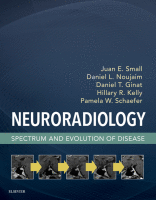Physical Address
304 North Cardinal St.
Dorchester Center, MA 02124

Introduction Paragangliomas of the head and neck are rare neoplasms of neural crest cell origin. The four most common sites for paragangliomas within the head and neck are at the carotid body, the jugular foramen, in the middle ear, and…

Introduction Labyrinthitis, also known as otitis interna, is an inflammatory disorder of the inner ear. Inflammation of the perilymphatic spaces results in secondary changes within the membranous labyrinth, the most common symptoms of which are sensorineural hearing loss and vertigo.…

Introduction A cholesteatoma is a cystic mass filled with keratin and lined by stratified squamous epithelium. Cholesteatoma is not a neoplasm and can be thought of most simply as skin in the wrong place. Although a cholesteatoma is histologically identical…

Introduction Sjögren syndrome (SS) is a chronic autoimmune disorder characterized by inflammatory destruction of the body's exocrine glands and may be considered primary or secondary, in association with other autoimmune disorders, such as collagen vascular diseases. Although SS can present…

Introduction Background IgG4-related disease (IgG4-RD) is a relatively recently recognized fibroinflammatory condition of unknown etiology characterized by elevated serum IgG4, plasmacytic infiltration, multifocal tumefactive fibrosis, and clinical improvement by steroid therapy. The association between autoimmune (sclerosing) pancreatitis and elevated serum…

Introduction Thyroid-associated orbitopathy (TAO), thyroid eye disease (TED), dysthyroid/TAO, and Graves orbitopathy all refer to a poorly understood autoimmune phenomenon resulting in the adipogenesis of orbital fat. An estimated 40% of patients with Graves disease develop TAO. Up to 20%…

Introduction Anomalies arising from the third and fourth branchial cleft remnants are quite rare. In particular, branchial abnormalities related to the pharynx are only a small subset of the already rare collection of branchial cleft lesions. Branchial abnormalities with a…

Introduction There are various forms of orbital infection, including those listed in the Jain-Rubin classification: 1. Periorbital cellulitis 2. Orbital cellulitis with or without intracranial complications 3. Orbital abscess with or without intracranial complications a. Intraorbital abscess, which may arise…

Introduction Deformities along the dorsal aspect of the thoracic spinal cord are occasionally identified on magnetic resonance imaging (MRI), often in patients presenting with myelopathy ( Fig. 36.1 ). A variety of nontumoral etiologies result in deformities of the dorsal…

Introduction Hirayama disease is a rare, slowly progressive, and self-limiting cervical myelopathy related to neck flexion in young adults. It is characterized by a pure focal amyotrophy in the C7-T1 innervated musculature. It presents classically in an adolescent male with…